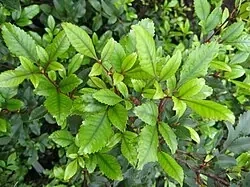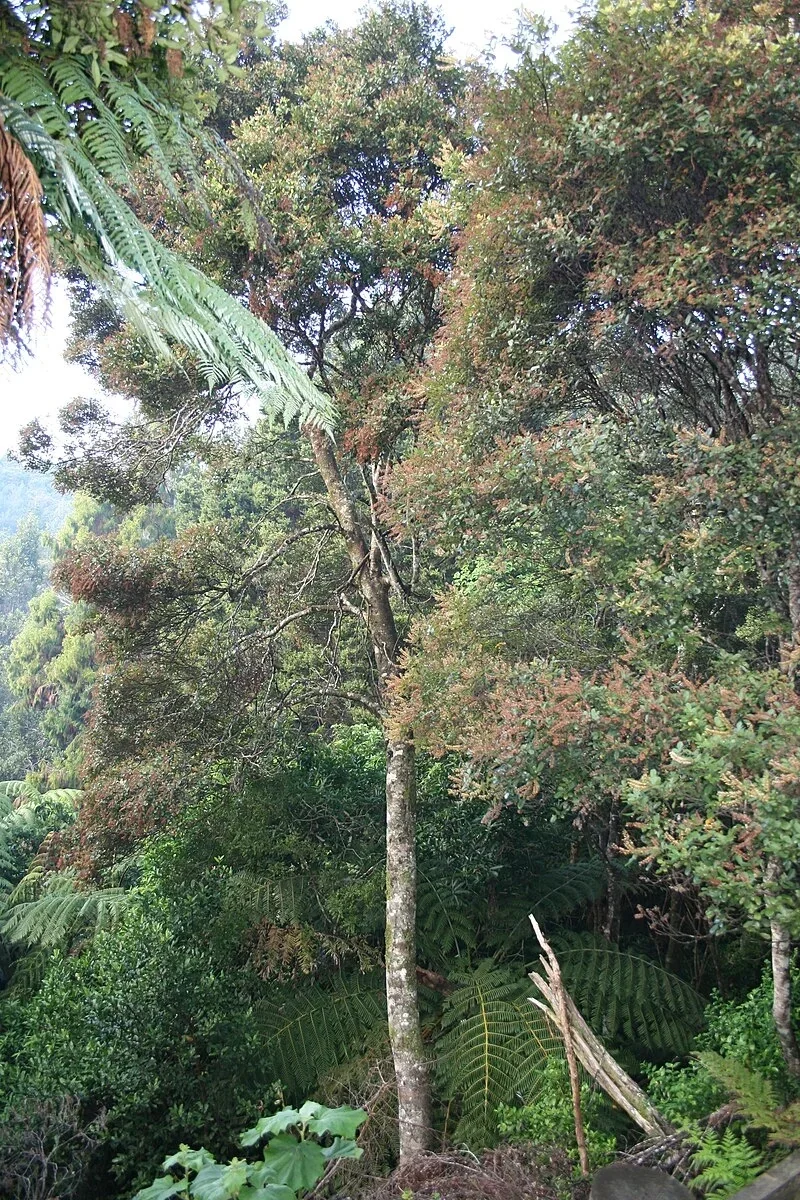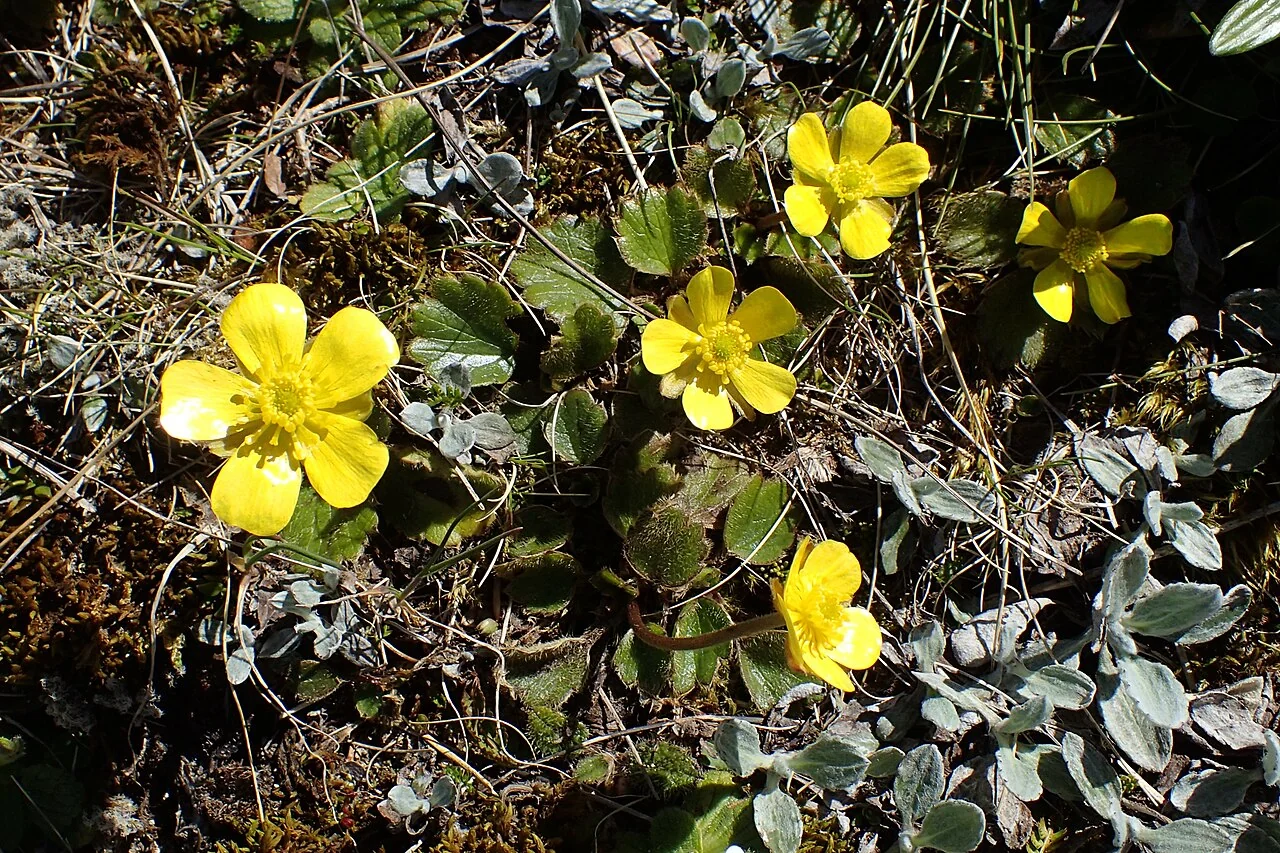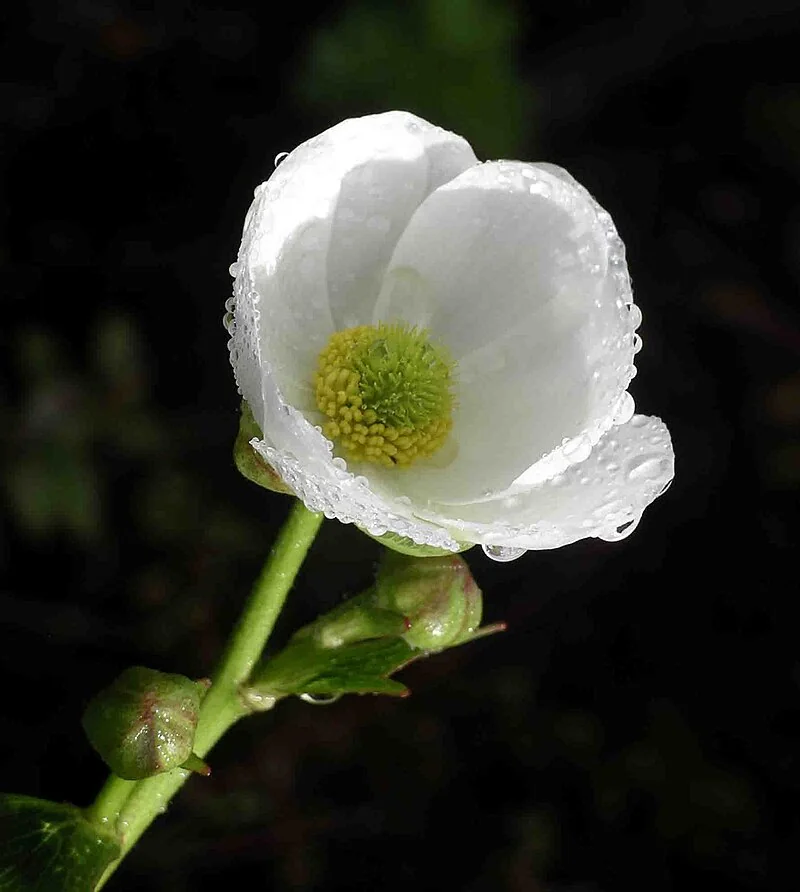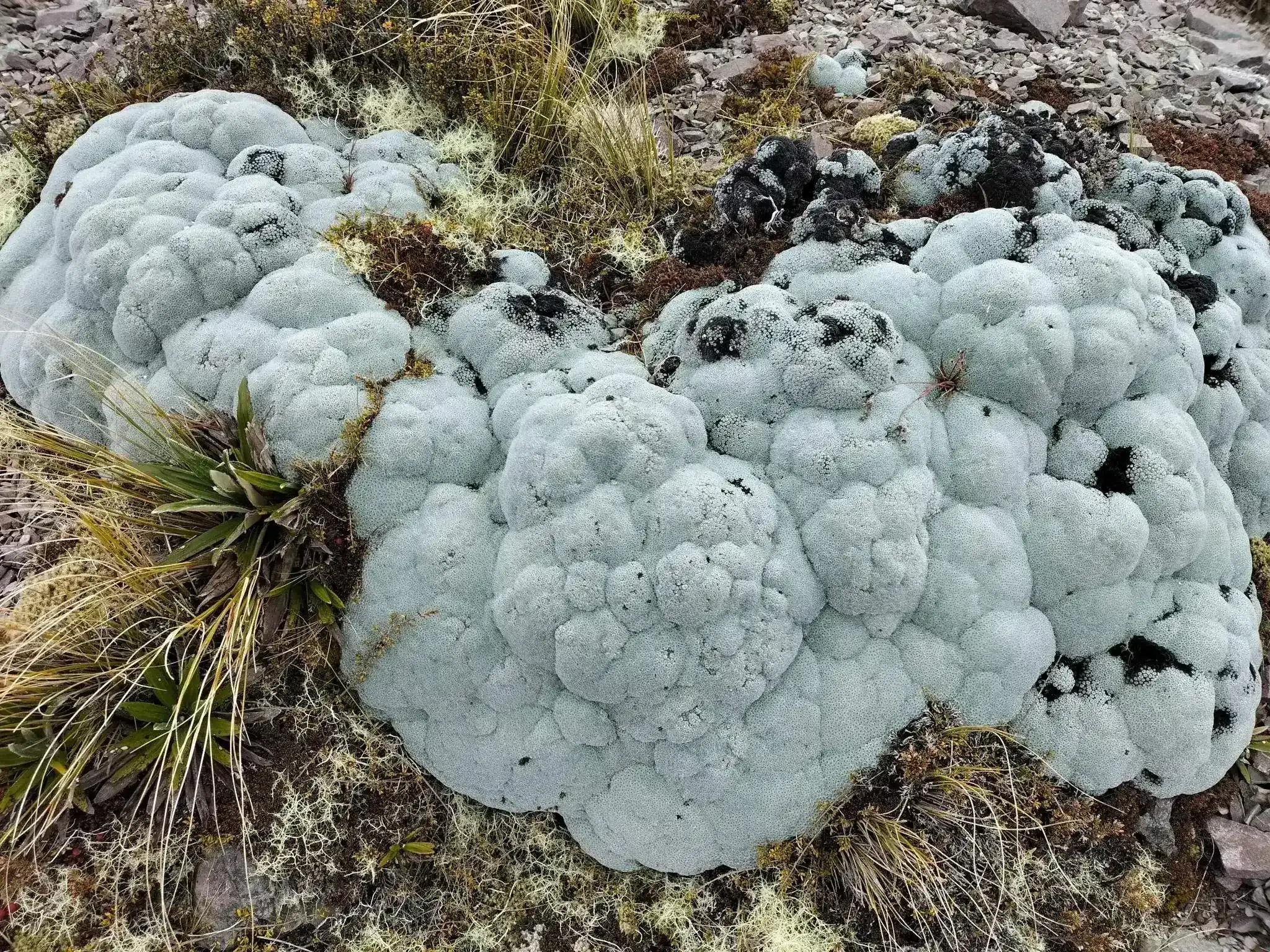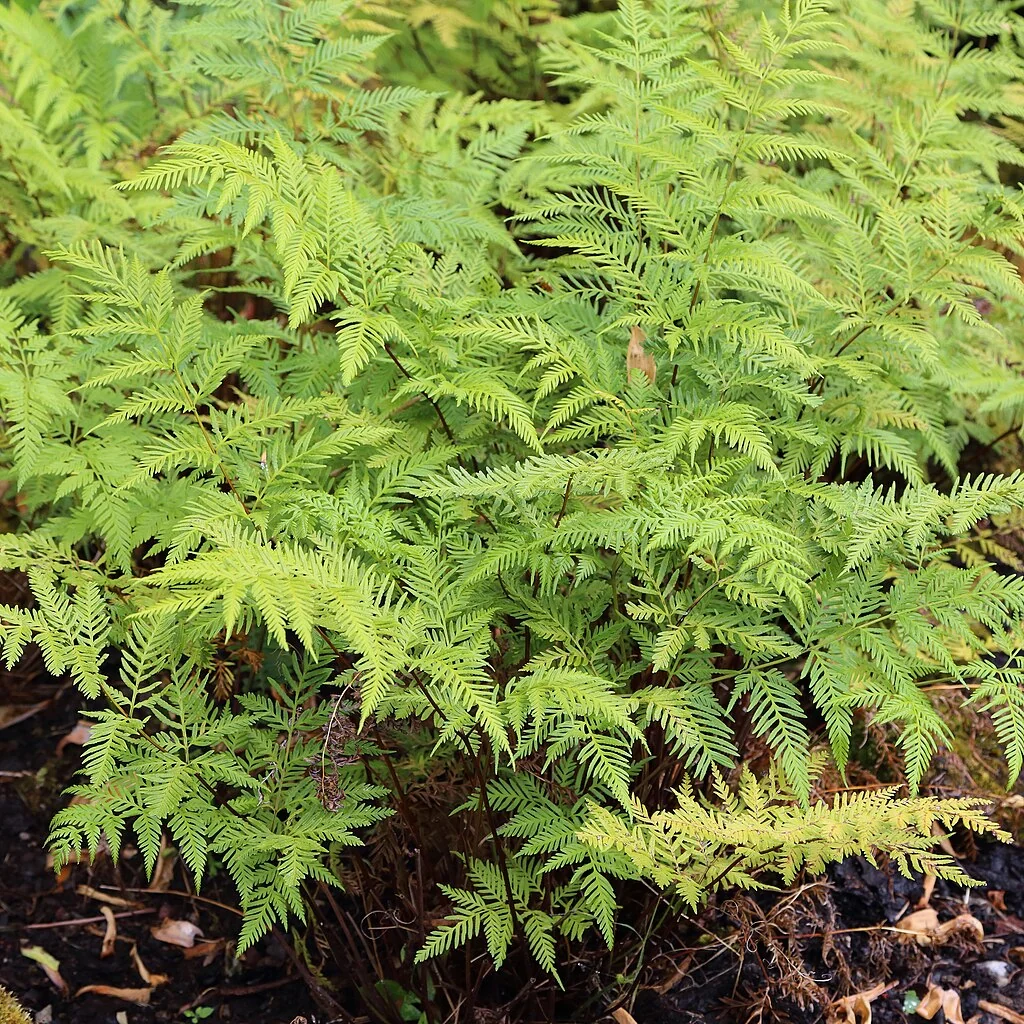
Shaking Brake
Pteris tremula
A tall, graceful brake fern with finely divided fronds that quiver in air currents. Occurs in moist forest and shaded scrub. Prefers sheltered, humid conditions among our native ferns.

Plant Description
Botanical Features
Shaking Brake (Pteris tremula), also known as Australian brake or tender brakefern, is a terrestrial fern species native to sheltered areas and forests in eastern Australia and New Zealand. It features pale green, lacy, comāpound fronds that can reach up to 2 meters in length, though typically ranging from 0.3 to 1.2 meters. These fronds are often 3-pinnate or more, giving them a delicate, lacy appearance. The delicate leaves are known to quiver and shake with the slightest breeze, earning it the nickname "shaking brake." The fern has a short, erect, tufted rhizome covered with narrow brown scales. The stipe (stalk) is typically brown, shiny, and can be up to 0.6 meters long, sometimes reaching 0.95 meters. The brownish sori (spore-producing structures) line the undersides of the frond margins. It is a fast-growing and relatively easy-to-grow fern in cultivation, preferring shady spots with good drainage and some moisture retention.
Quick Facts
| Scientific Name | Pteris tremula |
|---|---|
| Height | 0.8-2.0 m |
| Spread | 0.8-1.5 m clump |
| Light | Shade to bright shade |
| Soil | Moist, humus-rich |
| Water Needs | Consistent moisture |
| Frost Tolerance | Varies |
| Salt Tolerance | Varies |
| Growth Rate | Varies |
| Lifespan | Varies |
Climate Best Suited to
Overview
Regional Suitability
| City | Climate Suitability |
|---|---|
| Whangārei | Ideal |
| Auckland | Ideal |
| Hamilton | Ideal |
| Tauranga | Ideal |
| Rotorua | Ideal |
| Gisborne | Ideal |
| New Plymouth | Ideal |
| Napier | Ideal |
| Whanganui | Ideal |
| Palmerston North | Ideal |
| Wellington | Ideal |
| Nelson | Ideal |
| Christchurch | Ideal |
| Dunedin | Ideal |
| Invercargill | Ideal |
Shaking Brake thrives in New Zealand's temperate, humid climates, naturally occurring in moist forests and shaded scrublands throughout both main islands. It prefers consistently moist conditions with high humidity and protection from direct sunlight and strong winds.
Natural Habitat
Shaking Brake (Pteris tremula), also known as Australian brake or tender brakefern, is a terrestrial fern species native to eastern Australia and New Zealand. In New Zealand, it is found throughout the North, South, and Chatham Islands, as well as the Kermadec and Three Kings Islands.
Key Habitats Include:
- Sheltered Areas and Forests: Its natural habitat includes sheltered areas and forests, particularly wet sclerophyll and rainforest environments.
- Coastal to Montane: It thrives in coastal to montane areas, often in open, dry forests, scrubland, and even disturbed areas.
- Disturbed Ground: It is highly adaptable and can be found in wasteland, track and roadsides, and retaining walls in urban environments, showcasing its ability to colonize disturbed ground.
Preferred Conditions:
- Soil: It prefers well-drained soil with some moisture retention.
- Light: It is adaptable to various conditions, including sun and shade, but generally prefers shaded spots.
- Tolerance: It is adaptable and can tolerate frost, sun, shade, salt, and wind, making it a resilient species in diverse environments.
The Shaking Brake's widespread distribution and adaptability to a wide range of conditions underscore its ecological importance in contributing to the biodiversity and structural complexity of New Zealand's natural landscapes.
Plant Conservation
Conservation
Pteris tremula, also known as Tender Brake or Australian Brake, is a fern species native to Australia, New Zealand, Norfolk Island, Lord Howe Island, Vanuatu, and Fiji. In New Zealand, it is generally classified as "Not Threatened," but regional assessments may differ. In the Adelaide and Mount Lofty Ranges (AMLR) of South Australia, it is considered of conservation significance due to its "Extremely Restricted" area of occupancy and "Very High" taxonomic uniqueness. Despite its native status in some regions, Pteris tremula is a highly versatile and fast-growing species that can readily colonize gardens and walls. It has naturalized in various parts of the world, including southern Africa, California, and Argentina, where it can become an invasive weed, posing a threat to natural environments. Key threats to Pteris tremula in areas where it is of conservation concern include drought, climate change, invasion by weeds, altered water quality, increased water flows, and Phytophthora infestations.
Growing Requirements
Light Requirements
Shaking Brake requires filtered light or dappled shade. Avoid direct sunlight which can scorch the delicate fronds.
Soil Requirements
Prefers moist, well-draining soil rich in organic matter. Thrives in forest-type soils with leaf mold and good drainage.
Water Requirements
Requires consistent moisture but not waterlogged conditions. Regular watering essential during dry periods.
Planting Guide
Plant in part to full shade with consistently moist, free-draining soil rich in organic matter. Keep the crown at soil level; mulch with leaf litter.
- Moisture: Even; do not allow to sit in stagnant water.
- Soil: Leaf mould/compost over loam or fine bark-based mixes.
- Shelter: Protect from hot, drying winds to prevent frond scorch.
Ecosystem Notes
- Soil building: Regular frond fall contributes to humus.
- Bank stabiliser: Fibrous roots bind shallow soils in shade.
- Associates: With tree ferns, Blechnum s.l., and nikau.
Uses and Significance
Garden Uses
- Excellent for shaded and woodland gardens
- Perfect for creating tropical-looking displays
- Ideal for moist, sheltered areas
- Good groundcover in suitable conditions
Landscaping Ideas
- Woodland texture: Use as a soft, moving understorey along shaded paths.
- Shaded rain gardens: Plant above the wettest zone; prefers flow-through moisture.
- Containers: Large, shaded pots with moisture-retentive mixes.
Seasonal Care Calendar
Spring
Spring is the ideal time for planting and dividing Shaking Brake ferns. New fronds emerge as temperatures warm, and this is when the plant begins its most active growth period.
- Best time for planting new specimens
- Divide established clumps for propagation
- Apply organic mulch to retain moisture
- Remove any damaged or dead fronds from winter
- Increase watering as growth begins
Summer
Summer is the peak growing season for Pteris tremula. The fern produces most of its new fronds during this time and requires consistent moisture to support vigorous growth.
- Peak growing season with rapid frond development
- Maintain consistent soil moisture
- Provide shade during intense heat
- Monitor for spore production on mature fronds
- Control spread if becoming invasive
Autumn
Autumn brings spore maturation and is an excellent time for spore collection if propagation is desired. The fern begins to slow its growth as temperatures cool.
- Collect spores from fertile fronds when mature
- Continue regular watering but reduce frequency
- Remove old fronds that are yellowing
- Good time for transplanting if needed
- Apply winter mulch protection
Winter
Winter is the dormant period for Shaking Brake. The fern requires minimal care as growth slows significantly in cooler temperatures.
- Dormant period with reduced growth
- Water sparingly, only when soil becomes dry
- Protect from frost in colder areas
- Leave old fronds for winter protection if desired
- Plan spring propagation activities
Pruning and Maintenance
Techniques and Timing
Shaking Brake ferns require minimal pruning but benefit from regular maintenance to control their vigorous growth and maintain garden aesthetics. Care should be taken when handling as the plant contains cytotoxins.
- Remove old, yellowing, or damaged fronds throughout the growing season
- Cut fronds at the base near soil level using clean, sharp tools
- Wear gloves when handling due to toxic comāpounds in the plant
- Regular removal of spent fronds encourages new growth
- Control spreading by removing unwanted new plants
- Cut back severely overgrown clumps in late winter
- Remove fertile fronds to prevent unwanted seeding if desired
This fast-growing fern can become weedy in ideal conditions, so regular monitoring and pruning to control spread is often necessary to prevent it from overwhelming other garden plants.
How to Grow Shaking Brake
Shaking Brake (Pteris tremula) is a graceful fern native to New Zealand, known for its tall, finely divided fronds that quiver in air currents. This elegant fern is well-suited for warm, frost-free gardens or sheltered, bright indoor/outdoor positions, adding a touch of tropical lushness to any setting. Its delicate appearance belies a robust nature, making it a rewarding plant to cultivate with the right care. Understanding its propagation methods is key to successfully establishing and enjoying this beautiful native fern.
From Spores
Propagating Shaking Brake from spores is a fascinating and rewarding method, though it requires patience and attention to detail. Collect fertile fronds when the sporangia (spore cases) on the undersides of the fronds darken and are ready to release spores. Sow the spores onto the surface of a sterilized, fine medium, such as a blend of peat and sand or a specialized fern-raising mix, without covering them. Seal the container to maintain high humidity and place it in low light at temperatures between 18-24°C. Keep the medium evenly moist. After the prothallus stage, allow sporophytes (tiny true fronds) to develop, then carefully prick them out and grow them in shaded and humid conditions before potting them individually. Gradually harden them off before planting out into their final positions.
By Division
Division of established clumps is an excellent and reliable method for propagating Shaking Brake, especially for home gardeners. This is best undertaken in warm, humid conditions, typically in spring or early summer. Carefully lift the entire fern clump using a spade or fork. Gently rinse the growing medium from the roots and split the clump into firm divisions, ensuring each section has several healthy fronds and a sound rhizome (underground stem). Replant the divisions immediately at the original depth into prepared soil that is free-draining and humus-rich. Water thoroughly after replanting to settle the soil around the roots and keep the divisions evenly moist and shaded until new growth indicates successful establishment. This method is particularly effective for expanding existing plantings or for rejuvenating older, less vigorous clumps.
Pests and Diseases
- Frond scorch: Provide shade and humidity in hot weather.
- Fungal spotting: Water at soil level; ensure airflow.
- Slugs/snails: Protect emerging fronds.
Cultural Significance
Cultural Importance
Fern in Cultivation
Shaking brake's delicate, mobile fronds make it a favourite for shaded gardens and fernery displays, contributing to the living tradition of New Zealand fern appreciation.
While Pteris tremula, also known as Australian brake or tender brake, is a widely distributed fern in Australia and New Zealand, information regarding its specific cultural significance is limited. One source briefly mentions "Aboriginal Significance" in the context of its distribution in the Adelaide and Mount Lofty Ranges (AMLR) region of South Australia, but the details of this significance are not elaborated upon. The fern is primarily described in botanical terms, noting its pale green, lacy fronds and its preference for sheltered areas and forests. It is also recognized as a fast-growing and easily cultivated plant, which can sometimes become weedy. Its common name, "shaking brake," is derived from the way its fronds gently tremble in a light breeze.
Bonus Tip
If fronds become tatty after summer heat, cut back the worst and keep evenly moist-fresh growth will quickly restore a lush look in shade.
